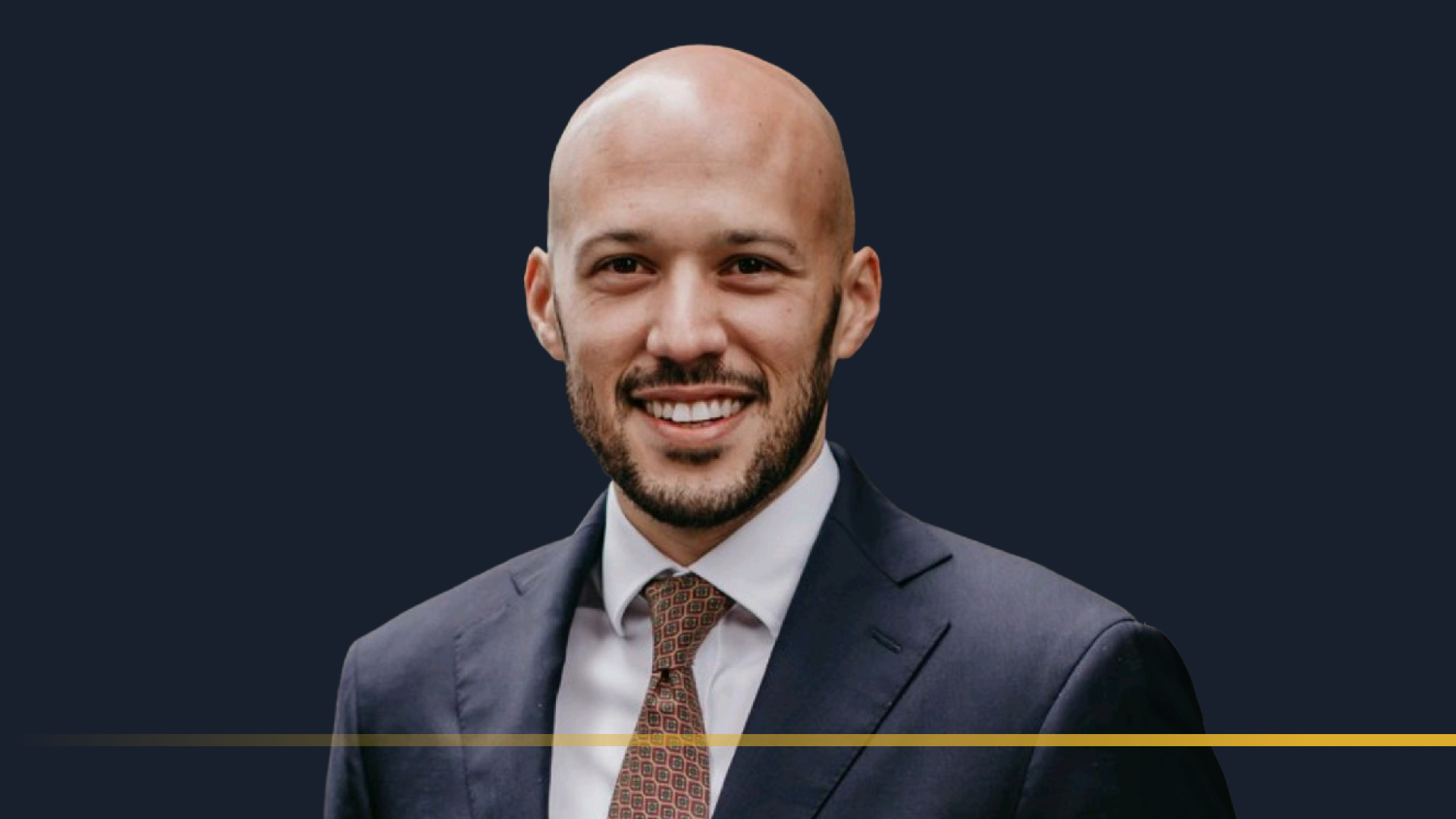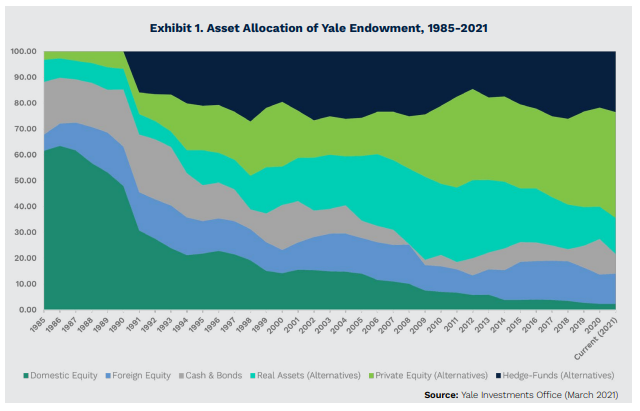28% of financial advisers are adding this asset class to portfolios. Here's why
Equities and bonds were positively correlated for a brief and painful period last year. It was a bloodbath. And while things have since returned to some degree of normality, it was a warning. Diversification cannot simply rely on a blend of listed equities and bonds, i.e. the old 60:40 portfolio.
Atrium Investment Management’s Brendan Paul recently argued that we should expect to see that positive correlation again, due to structurally higher inflation. Similarly, Wheelhouse Partners’ Alastair MacLeod pointed out that historically, bonds and equities could swing between negative and positive correlations. Subsequent research went on to find that Australian portfolios were insufficiently diversified for the uncertain environment we are in.
One clear and potentially effective solution to the diversification problem is alternative investment strategies.
Alternatives have been used by institutions for decades but, until recently, were largely inaccessible to retail investors. This has all changed and the alternatives space is now one of the fastest growing asset classes in funds management. This access has been driven by a host of new funds coming to market, at a range of minimum investment entry points.
PwC anticipates that alternative asset classes will reach $21.1 trillion by 2025 and account for 15% of global AUM.
It’s also borne out in the numbers of those expecting to invest in alternative assets.
- The Financial Planning Association’s Trends in Investing Survey report, found that 28% of financial advisers actively invest in or seek alternative strategies for their clients, and 19% of those who haven’t implemented alternatives strategies are considering an allocation in the next 12-24 months.
- In Preqin’s Investor Outlook: Alternative Assets H2 2023, it found the global institutions surveyed intended to increase allocations, with 50% nominating private debt, closely followed by infrastructure and venture capital.
Despite this, it’s still an area many financial advisers and investors steer clear of, concerned by liquidity, transparency, access, fees or even how returns work.
Given this mix of increased interest and ongoing trepidation, Livewire is once again shining a light on the alternatives space via our Alternatives in Focus 2023 series. We will be speaking with wealth managers and ratings houses about the pros and cons of using alternative assets within a portfolio. We'll also be speaking with a selection of alternative managers about the outlook in their respective asset classes.
Before we dive in, here’s a rundown on alternative strategies.
What are alternative strategies?
Alternative investment strategies are simply investment strategies or assets that will perform differently to equities and bonds – that is, they have a low correlation. This means that they can be protective in periods of market uncertainty where equities or bonds might be volatile.
Strategies can include those that cover property, commodities, and infrastructure, to private markets and financial instruments - like managed futures and derivatives.
Traditionally, there are seven main categories of alternative strategies:
- Private equity – investing in private companies. This includes venture capital, growth capital and buyouts.
- Private debt – loans financed outside of the banking system or traded on an open market.
- Hedge funds – funds that trade assets and use various strategies to generate returns, such as long-short equity, market-neutral strategies, volatility arbitrage and quantitative approaches.
- Real estate and infrastructure – can span anything from offices to telecommunications towers.
- Commodities – real assets predominately natural resources, such as agriculture, metals, oil and natural gas.
- Collectibles – purchasing and maintaining physical items and hoping they increase value, such as cars, jewellery, wine, coins and art.
- Structured products – products typically created by investment banks using fixed income markets and derivatives. Examples include credit default swaps and collateralised loan obligations.
A question of liquidity
While a common criticism of alternative investment strategies is that they comprise assets that are illiquid, that's not the full story.
Luke Laretive, CEO and investment adviser for Seneca Financial Solutions, points out that you can easily split the alternatives market into liquid and illiquid strategies.
“Liquid alts are those products/strategies that have low or no correlation with traditional equity or bond markets, but can easily be bought or sold.
Some examples would be absolute return/hedge fund strategies – think managed futures, trend following, market neutral, long/short, global macro, multi-strategy funds,” he says.
“These products generally utilise either or both discretionary and systematic (quant) to invest in large, liquid markets for commodities, currencies, equities, bonds/loans and derivatives, among other things.”

At the other end of the spectrum are illiquid strategies, which Laretive notes can be difficult to buy or sell for a fair price. These can include collectibles, certain types of private market investments, and unlisted property and infrastructure.
Even the illiquid space is evolving, however, with some fund managers in private markets structuring their offerings to be liquid for investors, even if some of the holdings are less liquid.
Does using alternative strategies in a portfolio work and how much should you allocate?
It’s a truism to say that optimal allocations depend on the individual (or institution), but the sweet spot for many portfolios is around the 15-20% mark for alternatives. At this point, a range of research indicates improved risk/return profiles for portfolios. That is to say, the evidence suggests incorporating alternative investment strategies will be better for your overall portfolio.
Some studies specific to this follow:
- Wheelhouse Partners collaborated with Delta Research and Advisory using their own strategy and a traditional Vanguard balanced portfolio to demonstrate that a 15% alternatives exposure could boost returns without adding risk in conservative portfolios, while reducing risk without losing returns in more aggressive portfolios.
- Dexia Asset Management recommended an optimal allocation of 15-20% of a portfolio because there can be uncertainty in what to expect return-wise in alternative strategies, but had noted the best risk-return profile came from an allocation of at least 30% combining different strategies.
- Analysis from UBS applied representative allocations to a range of funds and found it lowered volatility and improved risk-adjusted returns (as measured by the Sharpe ratio) compared to a standard 60:40 portfolio. You can see this in the chart below.

The 15-20% rule also seems to be reflected in superannuation funds.
If you look at AustralianSuper’s pre-mix Balanced option as one case study, it has around 23.5% allocated towards alternatives.
Where things differ is on an institutional and wholesale basis.
These businesses tend to lean more heavily on alternatives strategies, particularly in private markets which often have higher projected returns compared to public markets.
For example, Australia’s own Future Fund allocates 43.5% to alternatives (including private equity, infrastructure/timberland and other alternatives), while the Yale endowment fund is predominantly tilted to alternatives – particularly private equity – and has returned an average of 12% pa since 1985. You can see the increasing exposure to alternatives in the chart below.

How to select alternative strategies for your portfolio
When it comes to selecting alternative strategies for your portfolio, it’s not as simple as picking one fund to cover off the alternatives bucket. You also need to be mindful not to try to compare completely different strategies in your selection.
“We review performance and positioning relative to peers, benchmark/reference the portfolio in aggregate and what strategies and funds are adding or detracting from the portfolio returns. In such a broad asset class, it’s important to not compare, say, a global macro manager to a private credit fund,” says Laretive.
He also cautions investors to think about incorporating a range of different styles and strategies when it comes to alternatives.
“Different strategies bring different risk/return profiles to the overall portfolio. The knack is in blending them to best express your investment views,” he says.
Why consider alternative strategies?
There are a range of reasons to include an allocation to alternative investment strategies in your portfolio, some of which follow:
- Balancing your portfolio to manage for uncertain market conditions,
- Exposure to different return streams,
- Some returns can potentially be highly profitable (like venture capital) but carry additional risks,
- Some can offer more consistent, stable income (like infrastructure).
In any event, seeking exposure to alternatives requires flexible thinking, after all, the reason you use these strategies is because they perform differently to traditional assets like equities and fixed income.
For example, Laretive mentions that concerns over fees and returns are amongst the most common queries (and barriers to investing) he receives about alternative investment strategies.
"Clients can struggle to get their head around the concept of not just chasing the highest possible trailing return number. When an absolute return product underperforms an equity portfolio, they feel they should have just invested in equities," he says.
He adds that alternative investment strategies are often expensive, which can be off-putting to investors who haven't used them before. He suggests focusing on after-fee returns to determine the value-add over time.
There's no reason why alternative investment strategies should remain opaque. The space is growing in size and the opportunities and benefits can be significant, and we look forward to introducing you to a range of experts in the coming weeks.
How are you using Alternatives?
You're invited to participate in a short survey on alternative assets. All participants will gain first access to the survey results and a summary of the key findings.
Click here to take the short survey.
5 topics
2 contributors mentioned


